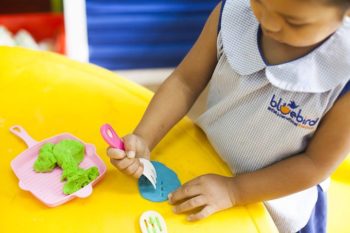The Perils of Alcohol Use During Pregnancy
 What could be wrong with having a soothing glass of wine every once in awhile during pregnancy? Well, unfortunately, a miserable future for the unborn child can be the result of a seemingly innocent habit. This habit could result in Fetal Alcohol Spectrum Disorder (FASD).
What could be wrong with having a soothing glass of wine every once in awhile during pregnancy? Well, unfortunately, a miserable future for the unborn child can be the result of a seemingly innocent habit. This habit could result in Fetal Alcohol Spectrum Disorder (FASD).
As the developing brain is very susceptible to alcohol throughout pregnancy, damage can be done even before a woman realizes she is pregnant. Damage is usually not obvious at birth and can span the spectrum: from full characteristic facial features and small stature, cognitive disabilities, and central nervous system effects to no facial features at all, normal intelligence and physical development. However, children on the spectrum who have no obvious characteristics, may have behavioral difficulties that have an impact on learning.
Alcohol Impact
The brain damage caused by the alcohol exposure may lead to the following:
- Executive function disorder resulting in poor decision making and impulsivity
- Inability to think ahead and understand the consequences of their actions
- Memory may be impaired. What is mastered one day is gone the next
Is There a Qualified Diagnosis?
Difficulties often do not receive sufficient attention until middle or high school and that is because they do not show the classical facial characteristics or do not demonstrate a developmental delay on standardized tests. Even then, in most states, they do not qualify for special intervention. Getting a qualifying diagnosis is nearly impossible and parents are very frustrated. Mothers may not remember those soothing glasses of wine or the child may be in foster care or adopted so history is unknown. Unfortunately, many end up becoming involved with the juvenile justice system.
Strategies to Support Children
Parents and teachers should find the following strategies to be helpful:
- Be aware of the kinds of situations that trigger inappropriate behaviors:
-
- Inconsistent, unstructured environments
- New situations
- Overstimulation
- Internal changes, such as illness or extreme fatigue
- Seek to understand what triggers inappropriate behavior as well as what consequences maintain the behavior.
- Increase predictability and consistency in daily routines. Prepare children for what comes next.
- Be very concrete with directions. Instead of “clean up”, say “take your dishes to the sink, rinse and stack them”
- Avoid making demands that are beyond the developmental level of the child. This can bring on a tantrum of frustration.
- Provide extra support during new or difficult tasks, teach in small steps.
- Reduce unnecessary stimulation, especially background noise.
- Respect children’s space by keeping unnecessary interruptions at a minimum.
- Limit the number of rules; communicate them clearly and enforce them consistently.
- Expect setbacks and regressions. They are inconsistent in their ability to perform skills they have previously been taught. Also, be aware that home events, particularly family or neighborhood violence, caregiver changes, and dependency court dates, can have a major impact on children’s behavior and learning.
- Be vigilant! Safety is an issue when children have poor impulse control and trouble understanding cause and effect. Repeat and reteach safety precautions continuously.
Helping Our Children Master Their Environment
Use of these strategies, over time, strengthens children’s self-control and sense of mastery over the environment. There is no cure for FASD, but those affected can be helped to stay, safe, resist exploitation, and act appropriately. The early the intervention, the better the outcome.
Ruth Cook
Copyright (c) 2020 by GenParenting

Ruth E. Cook, Ph.D. is a professor emeritus and was director of special education at Santa Clara University in Santa Clara, California. Formerly, she was a professor director of two inclusive campus preschool programs at Mount Saint Mary’s University in Los Angeles and at Southern Illinois University at Edwardsville. These experiences prompted her to be the lead author of Adapting Early Childhood Curricula for Children with Disabilities and Special Needs, now in its 10th edition. In addition, she is the lead author of strategies for Including Children with Special Needs in Early Childhood Settings and The Art and Practice of Home Visiting. While theoretically retired, she is busily involved in advocating for the inclusion of all children no matter their differences.

